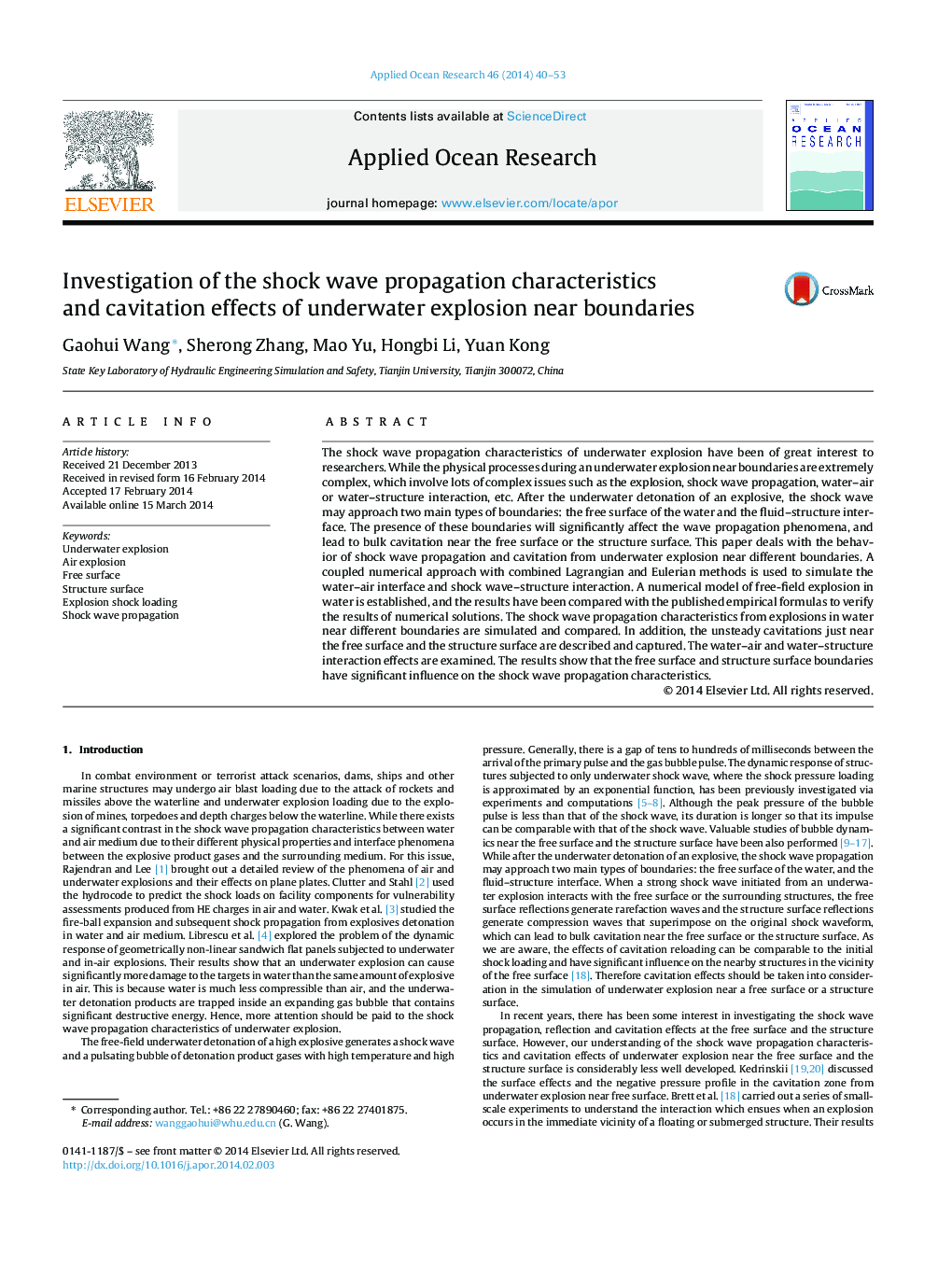| Article ID | Journal | Published Year | Pages | File Type |
|---|---|---|---|---|
| 1720078 | Applied Ocean Research | 2014 | 14 Pages |
•Processes of underwater explosion near boundaries are modeled with a coupled method.•Shock wave characteristics of underwater explosion near boundaries are compared.•The cavitation near the free surface and structures is described and captured.•Boundaries have significant influence on the shock wave propagation characteristics.
The shock wave propagation characteristics of underwater explosion have been of great interest to researchers. While the physical processes during an underwater explosion near boundaries are extremely complex, which involve lots of complex issues such as the explosion, shock wave propagation, water–air or water–structure interaction, etc. After the underwater detonation of an explosive, the shock wave may approach two main types of boundaries: the free surface of the water and the fluid–structure interface. The presence of these boundaries will significantly affect the wave propagation phenomena, and lead to bulk cavitation near the free surface or the structure surface. This paper deals with the behavior of shock wave propagation and cavitation from underwater explosion near different boundaries. A coupled numerical approach with combined Lagrangian and Eulerian methods is used to simulate the water–air interface and shock wave–structure interaction. A numerical model of free-field explosion in water is established, and the results have been compared with the published empirical formulas to verify the results of numerical solutions. The shock wave propagation characteristics from explosions in water near different boundaries are simulated and compared. In addition, the unsteady cavitations just near the free surface and the structure surface are described and captured. The water–air and water–structure interaction effects are examined. The results show that the free surface and structure surface boundaries have significant influence on the shock wave propagation characteristics.
